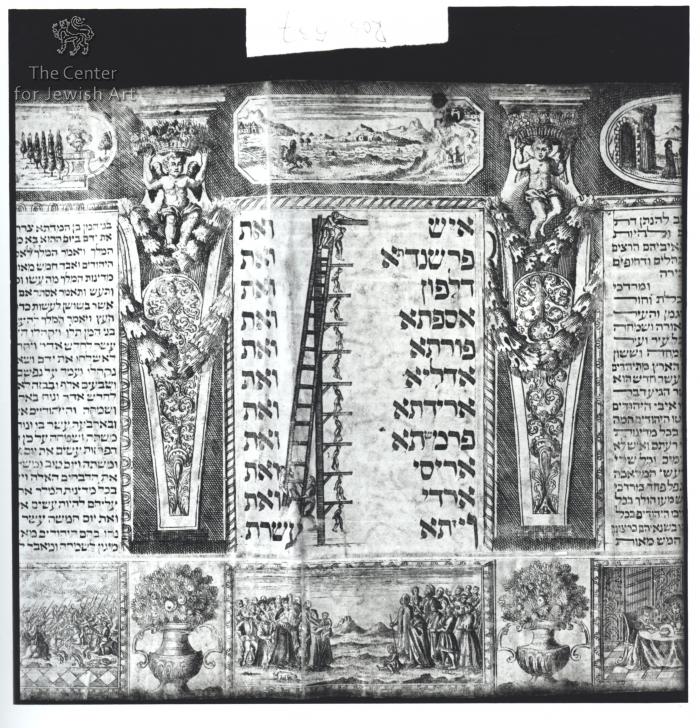Img. ID: 251732

In the upper margin landscape no. 2 is printed and in the lower margin, there is frame no. 14 in which two groups of people are shown. Some of them look upwards and this detail suggests that the scene should be interpreted together with the depiction of the scene of hanging of Haman’s ten sons (Es. 9:14) incorporated in the text column above. On every beam of a very high gallows, a single body of one of the sons is hanged. A high ladder leans on it and on its top an executioner is standing. It seems the people shown below are onlookers who are witnessing the execution.
P | Putto (Putti in Plural)
G | Garland
L | Landscape
E | Esther, Book of (following the order of the story) | Haman's sons hanged (Es. 9:14)
S | Scene, unidentified
B | Basket | Basket with flowers
V | Vase
A | Acanthus Leaf
E | Esther, Book of (following the order of the story) | *Other topics related to the Megillah: | Group of onlookers
|
This image belongs to the ''Ursula and Kurt Schubert Archive'' in the Center for Jewish Art.
Formerly in the collection of the Bibliotheca Rosenthaliana in Amsterdam (Ros 537). The current location of the manuscript is unknown.
There are two variants of the scrolls decorated with this pattern that in the Index are marked "I" and "II". In some exemplars, just below the decorative herms, the pedestals with angel's heads and bases were added, therefore, the text panels are higher; this type is marked with "II". Whereas, the rest of the manuscripts containing no pedestals with angel's heads and bases are marked with "I". The latter are more numerous.
The earliest scroll sharing similar engraved pattern is dated to 1701; this is the megillah BCM 25 from the Braginsky Collection in Zurich (see http://braginskycollection.com/esther-scrolls/; accessed on 22.04.2020).



